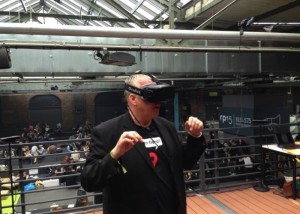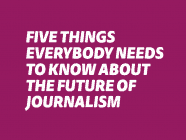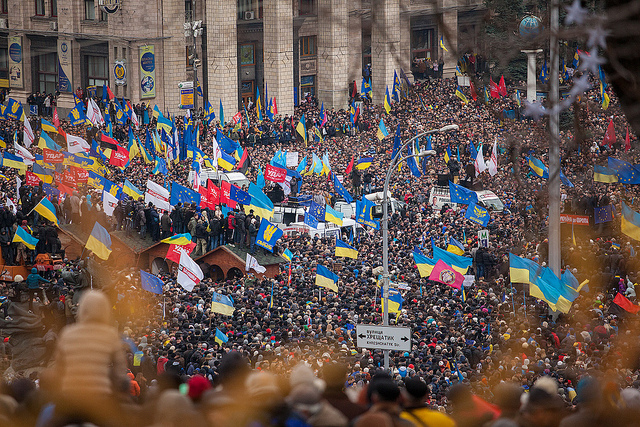 “Using trans-media techniques to immerse readers in journalistic stories with their virtual embodied selves”: in a sentence, this is immersive journalism, according to James Pallot, co-founder of Emblematic Group, a multimedia company which hopes to re-invent the future of journalism by immersing it into augmented and virtual reality.
“Using trans-media techniques to immerse readers in journalistic stories with their virtual embodied selves”: in a sentence, this is immersive journalism, according to James Pallot, co-founder of Emblematic Group, a multimedia company which hopes to re-invent the future of journalism by immersing it into augmented and virtual reality.
The Emblematic Group approach to news-making is to give people the chance to enter the environment and the context where the news happened. A digitally-rendered, first-person version of actual events – recreated with original real source material – is accessed via a virtual reality headset. Pallot, speaking at the recent re:publica conference in Berlin, said immersive journalism aims to generate “a strong emotional reaction” to news, by stressing the feeling of “being there”.
One of the first immersive journalism projects dates back to 2007: “Gone Gitmo” is a virtual representation of the conditions experienced by detainees in Guantanamo jail. It was created on the basis of Mohammed al-Qahtani’s interrogation logs, obtained through a FOIA request.
By wearing the virtual reality headset, viewers can re-live the disturbing experience of being in a cell in Cuba, including being forced to sit in painful positions, as detainees are, according to the interrogation logs.
The experience is made even more realistic by the inclusion of audio, replicating the guards voices and the jail noises. The goal of this project, Pallot told the audience in Berlin, was to “recreate the first person experience” but also the third person one as, at a certain point, by turning aside, viewers can see themselves as detainees reflected in a mirror.
“Hunger in Los Angeles” is a similar project from 2012, originally commissioned from Nonny de la Peña by the University of Southern California and premiered at the Sundance Festival.
In this case, again by using a headset, viewers can live the experience of queuing outside the First Unitarian Church on 6th Street in Los Angeles, waiting to get food and aid. At a certain point, a starving man falls to the ground in a diabetic coma. The project is based on a real news story and it’s a powerful storytelling example of food issues in the US.
Later, Embelmatic Group also started using more user-generated content as a source for its work, starting from the “Use of Force” piece. The project is dedicated to the story of Anastacio Hernandez Rojas, a migrant killed by the police on the border between Mexico and the US. In this case, the news scene has been rendered from two points of view, offered by two different pieces of footage: one shot on the street, close to the event, and another one, taken from a balcony above.
By wearing the headset, viewers are either taken onto the street, or to the same balcony, watching the man being beaten to death. The virtual “double” of the victim was recreated with a 3D scan. Last January, “Use of Force” was featured on BuzzFeed, which also used it as an experiment to test the reactions of its journalists to the immersive journalism experience and to the feeling of “being” in the news. Results are very interesting, also from a psychological point of view, and have been summed up in a video, shown by James Pallot at re:publica.
“Project Syria”, is probably Nonny de la Peña’s and Emblematic Group’s most famous work so far. It was originally commissioned for the World Economic Forum in Davos and it is based on two different scenes from the Syrian conflict. The first one deals with a rocket strike that hit a building in Aleppo, while the second one takes place in an overcrowded refugee camp and shows the living conditions of the people living there.
In the air strike video, the Emblematic Group team has “recreated” the scenes starting from original Ugc footage, including a video shot on the street near the hit building. Moreover, digital scans of witnesses were created, making the final outcome even more realistic.
On the border with documentary, immersive journalism is without doubt one of the most interesting scenarios for the future of journalism. According to James Pallot, the shape of journalism to come will have to do with “the sense of being there” in the news and not only in its own reporting. The future of journalism will be about pushing the borders of what we call “journalism” even further.
Article translated from the original Italian
Pic credits: Philip Di Salvo / EJO
Tags: digital news, immersive journalism, Research, virtual reality













































